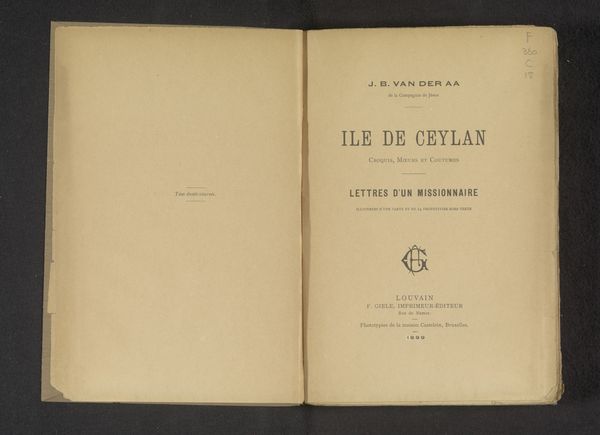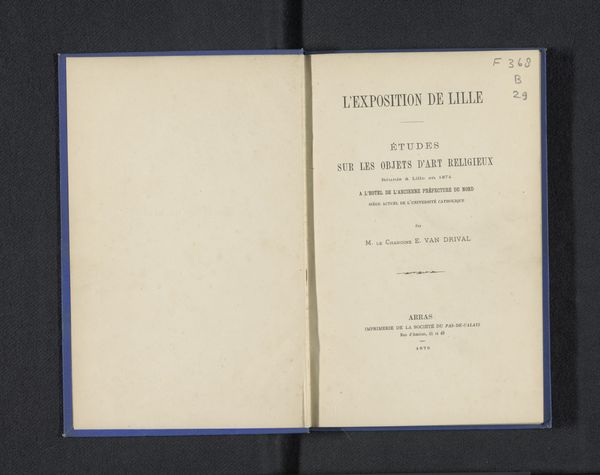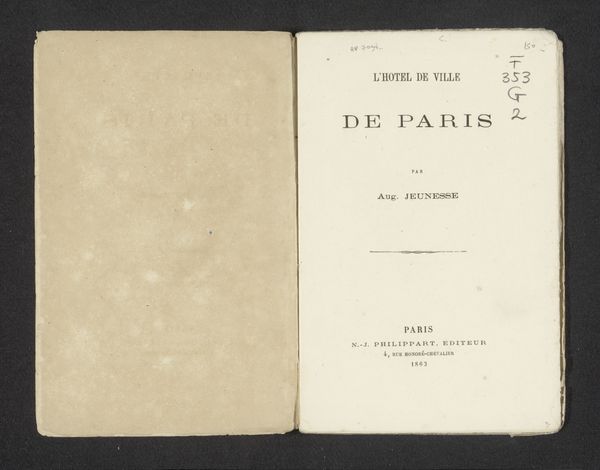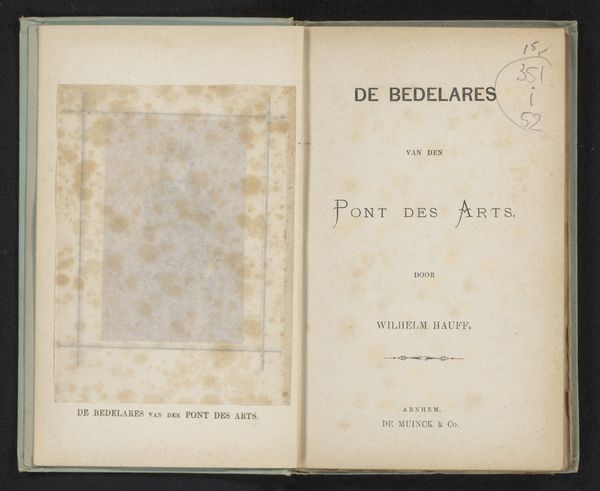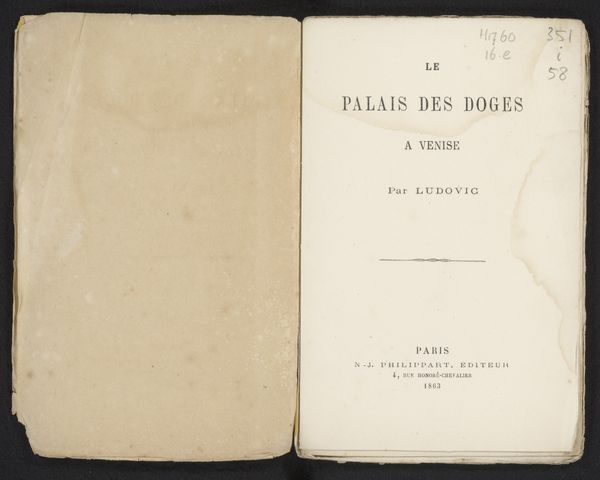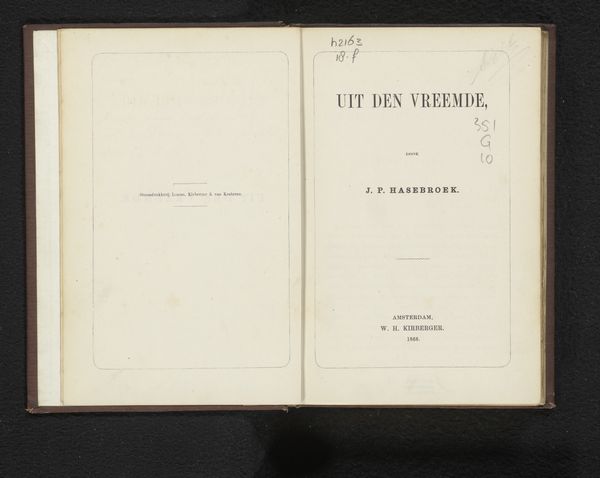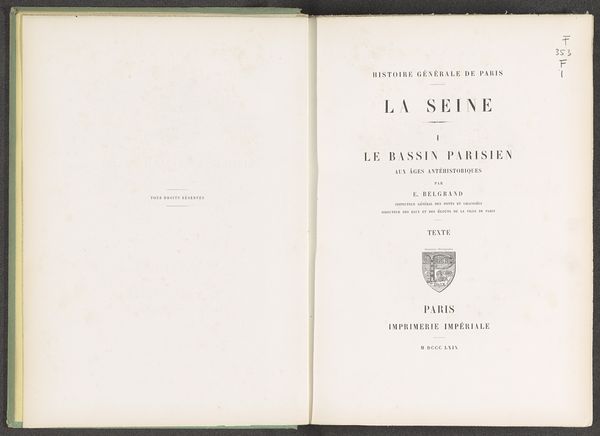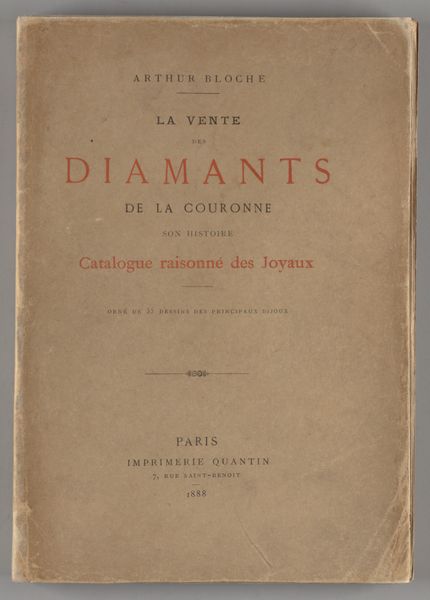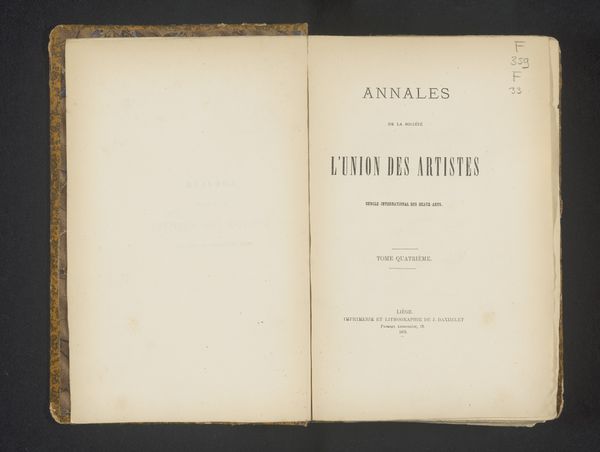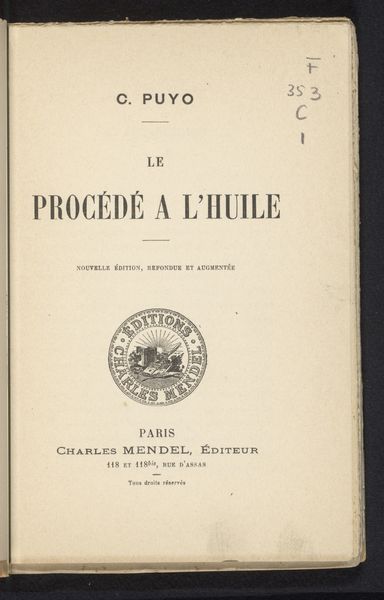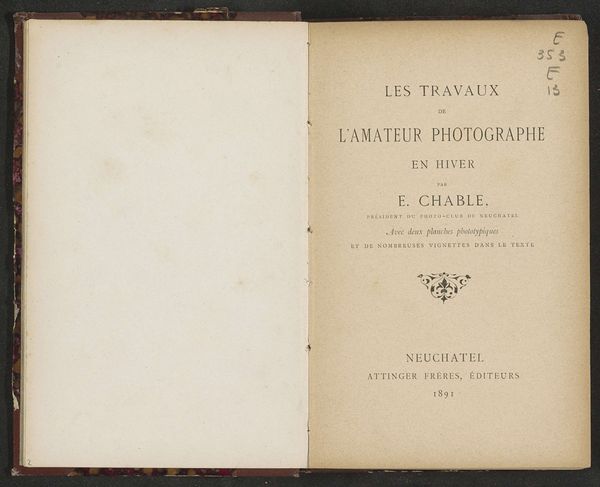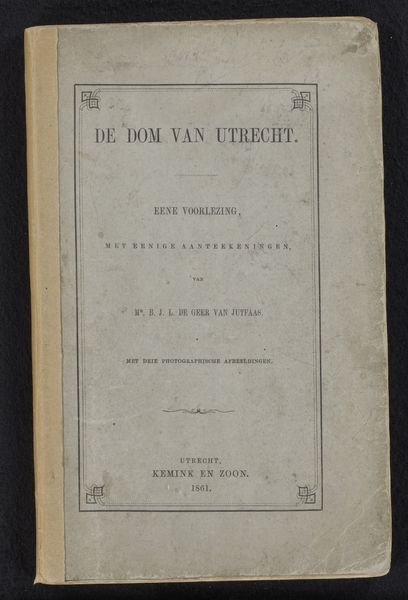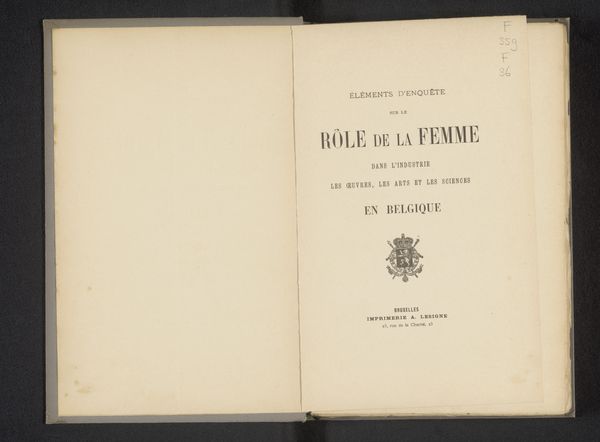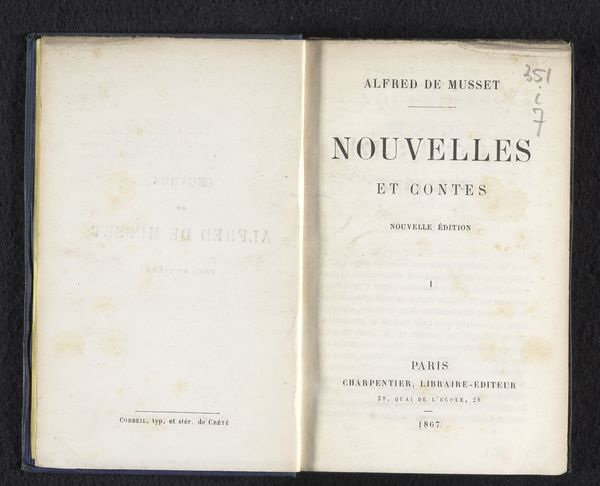
print, paper, typography
# print
#
book
#
paper
#
typography
#
decorative-art
Dimensions: height 300 mm, width 238 mm, thickness 27 mm
Copyright: Rijks Museum: Open Domain
Curator: Welcome. Today, we’re looking at Jean Robie’s 1883 print, "Fragment d'un voyage dans l'Inde et à Ceylan." Editor: Ah, the charm of an antique book cover! There's something immediately appealing about the delicate typography, like a whisper from a forgotten age. Curator: It's definitely representative of the late 19th-century fascination with Orientalism. The decorative arts at this time, were hugely influenced by idealized and romantic notions of the East, particularly British India and Ceylon, which we now know as Sri Lanka. How does that frame its purpose and content for you? Editor: Knowing it’s a “fragment” adds to the mystery, doesn’t it? What’s inside? What did Robie choose to reveal, or omit? I imagine rich tapestries and fragrant spices but also, if I dare, some colonial baggage too. The type-face evokes curiosity, like something exotic hiding behind formality. I get an interesting whiff of colonial romanticism from it all. Curator: Absolutely, there is a critical discourse to be had here. What did "travel" to India and Ceylon represent in 1883? The project of colonization and, to a significant extent, resource exploitation justified by what Edward Said termed "imaginative geography." Consider how Robie positions his name prominently, a symbol of Western authority staking its claim. The font selection also subtly speaks to these power dynamics... Editor: See, that’s where my mind wanders, wondering about what was left unsaid. The book hints at adventure and observation. The journey to India was often filtered through a very Western lens at that time, full of power dynamics. Thinking about who gets to tell a story, what perspectives are valued? The page feels…incomplete on its own. Curator: Exactly. Even seemingly benign aesthetic choices, such as typography and layout, can reinforce a specific narrative. It prompts us to critically assess travelogues and orientalist representations as inherently partial and interested accounts. Editor: So it becomes less about the beauty and more about the buried assumptions and agendas that it unwittingly upholds. Now, I'm just full of questions. What were these fragments exactly? How do they shape a particular European viewpoint on very old societies? Curator: Ultimately, Robie’s work reminds us that art doesn’t exist in a vacuum. Instead, it's entwined with historical power structures, perpetuating the narratives we must continually challenge. Editor: Makes you think, doesn't it? A cover promising adventure turns out to be a window into a far more intricate conversation about colonialism, perspective, and whose stories truly get told.
Comments
No comments
Be the first to comment and join the conversation on the ultimate creative platform.
